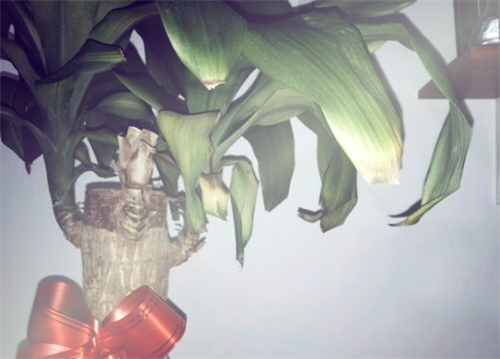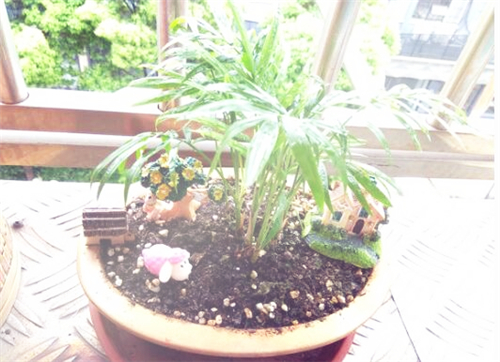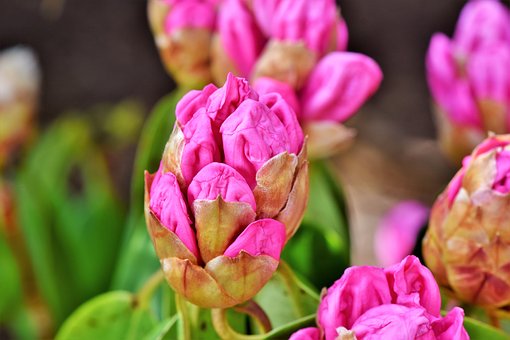Does the evergreen tree blossom? When will it blossom? What's the sign? How can it blossom?
Brazilian wood, also known as Brazilian iron tree, Brazilian millennium tree, fragrant dragon blood tree, is a common evergreen tree in the tropics, which is widely cultivated and indoors because of its high ornamental value. When will it blossom? What's the sign? How can it blossom?

Flowering time:
Brazilian wood blossoms. Brazilian wood flowering is generally a long branch protruding from the leaves, covered with globular white flowers, some like cloves, but more petals than cloves, each with six or seven pieces, you can smell a faint fragrance.
The florescence of Brazilian wood is usually in January. Brazilian trees are evergreen trees with a height of more than 6m. The leaf cluster is born at the top of the stem, long 40~90cm, wide 6~10cm, wide linear, slightly obtuse, curved into a bow; leaf margin undulating, bright green, parallel veins, glossy, nearly without petiole. Panicle, flowers small, clustered, yellowish green, fragrant in the evening. The fruit is orange.
The implication of flowering:
Brazilian wood blossoms are usually caused by lack of water or high room temperature. If you say it in terms of omens, it means that the nobles of the family are coming. The blooming of Brazilian wood indicates good wishes in the African region and is seen as a symbol of wealth and auspiciousness, and it usually takes decades for Brazilian wood to blossom.
The flowers of Brazilian wood are not only non-toxic, but also good for the human body to grow indoors. The fragrance of the flower is strong, but it is not toxic. On the contrary, it also absorbs harmful gases such as xylene, toluene, trichloroethylene, benzene and formaldehyde.
Culture skills:
1. Soil
Brazilian wood is suitable for loose, well-drained, humus-rich sandy loam soil of the Feiwo River, and avoid alkaline soil. Pot soil should use rotten leaf soil or peat soil, add about 1 to 4 river sand or perlite and a small amount of mature organic fertilizer. The soil is loose, well drained and rich in organic matter, which is beneficial to its growth.
2. Lighting
Brazilian wood has a wide range of adaptation to light, but it is not resistant to strong light, especially from May to October, the strong light will lead to leaf yellowing or leaf tip scorching, we should pay attention to shading and give bright scattered light. Although it is shady, but too shady will also make the leaf color dim, especially the variegated leaf varieties, the markings on the leaf surface are easy to disappear, reducing the ornamental value.
3. Temperature
The suitable temperature for the growth of Brazilian wood is 20 ℃ to 28 ℃, the dormancy temperature is 13 ℃, and the overwintering temperature is 5 ℃. If the temperature is too low, chloasma will appear at the tip and edge of the leaf, and in serious cases, the shoots or the whole plant will be damaged by freezing. Therefore, it is necessary to move to the greenhouse for maintenance in winter in the north. If it is placed indoors, it should be placed in a place with light, and it is better to keep it above 6 ℃ to 8 ℃ at room temperature.
4. Watering
The long-term maintenance of northern Brazilian wood is in spring, summer and autumn, watering every 2 to 3 days in sunny days, and spraying water to the leaves once or twice a day. It is appropriate to control the amount of watering after the end of autumn and keep the basin soil slightly wet. Watering should be controlled in winter, and the basin soil should be kept semi-dry and semi-wet, such as excessive watering will rot roots and scorch leaves.
5. Fertilization
Brazilian wood needs to consume some of its own nutrients in the process of growth, and if it is not fertilized in time, it will cause lack of stamina and gradual degradation. During the growing period, organic fertilizer was first applied at the base or edge, and then liquid fertilizer or compound fertilizer was applied once or twice every 15 to 20 days to ensure the luxuriant growth of branches and leaves. Fertilization should be thin fertilizer, do not thick fertilizer, fertilizer application period is from May to October every year. Stop fertilizing in winter and move indoors for the winter. For variegated varieties, attention should be paid to reducing the proportion of nitrogen fertilizer, so as not to cause excessive growth of leaves, and lead to dull or even disappear speckles.
Time: 2019-04-09 Click:
- Prev

Is the evergreen shrub pocket coconut poisonous? Will it blossom? When does it open? What's the moral? How can you keep it open?
Pocket coconut, also known as beautiful bamboo coconut, pocket coconut sunflower, dwarf brown, dwarf coconut, living room brown, pocket brown, is an evergreen shrub native to Mexico and Guatemala. It is called pocket coconut because it looks like a coconut tree. many people like to put it indoors to improve the effect of decoration.
- Next

The King of Woody Flowers, do azaleas have seeds? How much is the seed per jin? When will it be ready? What?
Rhododendron, also known as rhododendron, pomegranate, Yingshanhong, Zhaoshanhong and Tang rhododendron, is a common evergreen shrub in southern China. It is the provincial flower of Guizhou, Anhui and Jiangxi. It is cultivated indoors, parks and other places because of its high ornamental value.
Related
- Fuxing push coffee new agricultural production and marketing class: lack of small-scale processing plants
- Jujube rice field leisure farm deep ploughing Yilan for five years to create a space for organic food and play
- Nongyu Farm-A trial of organic papaya for brave women with advanced technology
- Four points for attention in the prevention and control of diseases and insect pests of edible fungi
- How to add nutrient solution to Edible Fungi
- Is there any good way to control edible fungus mites?
- Open Inoculation Technology of Edible Fungi
- Is there any clever way to use fertilizer for edible fungus in winter?
- What agents are used to kill the pathogens of edible fungi in the mushroom shed?
- Rapid drying of Edible Fungi

